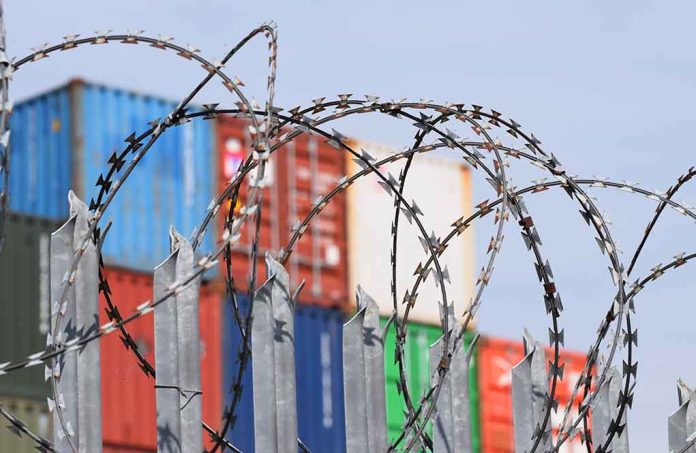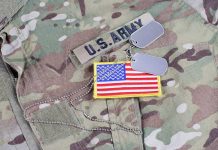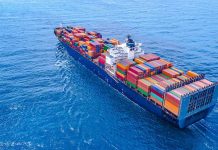
The cargo ship Ruby, laden with ammonium nitrate and precariously close to the SS Richard Montgomery, threatens to echo past disasters.
At a Glance
- Ruby carries 20,000 metric tons of ammonium nitrate, sparking safety concerns.
- Located 30 miles from SS Richard Montgomery, a WWII-era wreck with explosives.
- Recent storm damage to Ruby intensifies the potential crisis.
- Officials are cautious but believe non-intervention is safest for the wreck.
Proximity to Peril
The Ruby floats 30 miles from the SS Richard Montgomery, a sunken WWII ammunition vessel off Sheerness, Kent, holding 1,400 tonnes of explosives. The Montgomery’s masts are visible from shore, surrounded by an exclusion zone. The possibility of a catastrophic explosion raises fears, underscored by the fact that the Ruby carries dangerously high amounts of ammonium nitrate. The cargo’s explosive potential, reminiscent of the 2020 Beirut disaster, heightens urgency to address the threat.
The Montgomery lies undisturbed since 1944, with near-misses involving other vessels emphasizing its volatility. Authorities assume non-intervention is currently the safest course, though the deteriorating wreck could worsen conditions at any point. Suggestions for mitigating risk include towing the wreck to deeper waters or carefully removing its dangerous cargo. However, these options are costly and complex, pushing the priority of proceeding with caution.
The Ruby: A Floating Time Bomb Near Norway’s Critical Infrastructure
The Ruby, a Malta-flagged Russian-linked cargo ship, currently floats off Norway's northeast coast, casting a long shadow over the region's security and environmental landscape. Laden with a staggering 20,000… pic.twitter.com/escPf70CXC
— Niels Groeneveld (@nigroeneveld) September 18, 2024
Floating Explosive
Ruby’s ‘floating bomb’ status stems from its volatile cargo, sevenfold the explosive material compared to the ill-fated Beirut stockpile. This heightened risk has led numerous NATO states to deny docking access, further complicating the ship’s plight. Ruby has suffered hull, propeller, and rudder damage, compounding safety deficiencies and expired seafarer agreements, contributing to the hesitancy of intervention. The prospect of an explosion comparable to the Hiroshima atomic bomb looms ominously.
Roland Alford, managing director of Alford Technologies, stated that should it explode, it would be “by far the largest accidental explosion of ammonium nitrate.”
Safety protocols demand that specific conditions, such as fire, must exist to detonate ammonium nitrate. However, the Ruby’s recent damage heightens the possibility of such a scenario unfolding. Public outcry and international scrutiny add pressure on authorities to resolve this looming threat effectively. Despite the high stakes, UK officials’ efforts to securely transport Ruby to shore show cautious optimism to avert another large-scale disaster.
Potential for Catastrophe
Roland Alford outlines that a detonation could result in unprecedented destruction, akin to an atomic blast’s force. While ammonium nitrate demands particular conditions for an explosive reaction, the Ruby’s compromised state adds to the concern. The Department for Transport, in partnership with the Ministry of Defence, is engaged in protective measures around the SS Richard Montgomery, indicative of the broader implications of this maritime conundrum. Surveillance and risk assessment remain at the forefront as officials navigate these treacherous waters.
“A potential explosion aboard a damaged Malta-flagged cargo ship carrying ammonium nitrate from Russia could cause a blast as powerful as the atomic bomb used by the U.S. in Hiroshima, Japan, during World War II,” an expert has said.
Considerations by the Royal Navy to dismantle parts of the WWII wreckage highlight existing long-term perils. As nations grapple with the maritime dilemma involving the Ruby, strategies lean toward cautious optimism. Priority remains focused on resolving the danger with minimal disruption, ensuring any actions manage to preserve safety and stability in the region. The situation’s parallels to historical incidents underscore the critical importance of vigilant engagement in mitigating today’s maritime threats.














